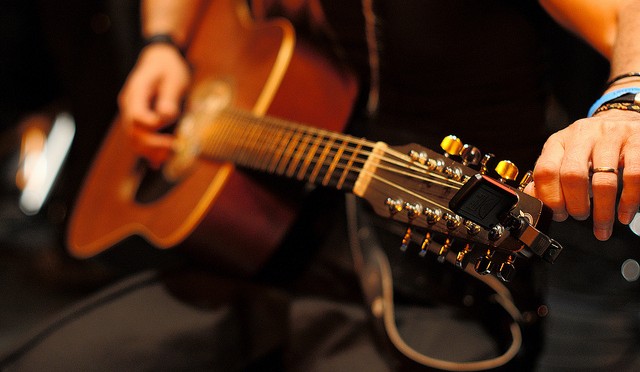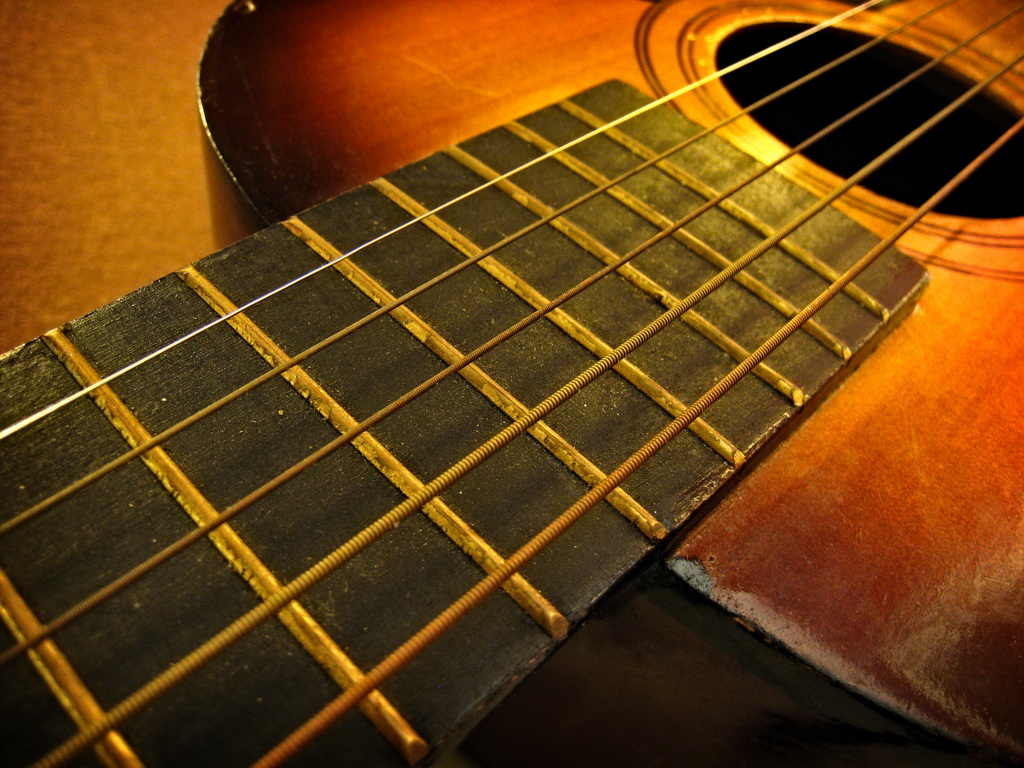
Scales make creating guitar solos a lot easier and if you understand the main scale patterns, you can better understand which chords go well together and create a cool sound.
The major pentatonic scale isn’t necessarily the favourite scale to learn among guitarists, but it nonetheless adds much more depth to your guitar playing.
If you’ve not yet looked at the major scale and the minor pentatonic scale, it’s a good idea to do so before venturing into the world of major pentatonic scale. 
Scale Formula
The reason why you should understand the minor pentatonic scale first is mainly down to it essentially being the same scale as the major pentatonic scale. Both scales have five notes in the sequence instead of the seven notes in the other common scales, like the major scale.
What separates the minor pentatonic scale from the major pentatonic scale is the root note and the tonal centre.
The scale formula, therefore, looks a bit different. For major pentatonic scale the formula looks like this:
|
T |
T |
TS |
T |
TS |
|
| 1 | 2 | 3 | 4 | 5 | 1 |
In the formula, the letters represent the interval distances of the notes. The letter T stands for tone (whole step), S for semitone (half step) and TS for tone + semitone (minor 3rd interval). The numbers represent the note.
The C major pentatonic scale, therefore, looks like this:
|
|
I |
II |
III |
IV |
V |
VI |
VII |
I |
| C major pentatonic scale |
C |
D |
E |
G |
A |
C |
||
| C major scale |
C |
D |
E |
F |
G |
A |
B |
C |
We’ve added the C major scale as a comparison for you to look at. In essence, the major pentatonic is a major triad of C major scale, with the exception of the 2nd and 6th degrees added to the major scale.
If you think about the sequence, you can see how the formula works. From the first note C it takes a whole step to D, another whole step to E and then a minor 3rd interval step to G, and so on.
The Chords
The chords used in major pentatonic scale are often applied in a very specific way. You often hear the scale used in blues and country music, for example. Listen to the classic Lynyrd Skynyrd song to hear howthe major pentatonic scale can be used in songs.
The chords used are often diatonic chords. For example, C major diatonic chords in C major pentatonic scale would look like this:
|
|
I |
II |
III |
IV |
V |
VI |
VII |
I |
| C major pentatonic scale |
C |
D |
E |
G |
A |
C |
||
| C major diatonic chords |
C |
Dm |
Em |
F |
G |
Am |
Bm7b5 |
C |
Practice Tips
The major pentatonic scale is a cool addition to your guitar lessons, as it adds an earthy, country sound to your music.
The fingering technique depends a lot on your own preferences, so just see what sort of style works the best for you. The major pentatonic scale, like all the others, will take a while to master, but just stay patient.
As with the other scales, it is a good idea to practise the scale by using the five common scale positions. The CAGED system is a helpful tool, but you need to pay extra attention when using it for the major pentatonic scale.
The visual shapes of the positions are the same to the minor pentatonic, so you need to pay a lot of focus on getting the root note right.
Understanding the major pentatonic scale can help you develop a cool sound. It is a fun scale to use and it will help you develop your skills further.
Just put on your Stetson and start practising!
Are you a guitarist? Check out our full range of online guitar lessonsAre you a saxophonist? Check out our full range of online saxophone lessons
Subscribe to Pro Music Tutor from as little as £7.99 per month
Related Posts
-
The Benefits of Online Music Education
Learning music has never been easier, since the internet and modern technological advancements have opened the doors to countless possibilities, expanding the subjects people can choose from and how the lessons are taught. Now, people can study a whole host of music-related topics; from learning to play guitar or DJing, to understanding the inner workings […]
View All >> -
Essential Jazz Guitar Scales that are Easy to Learn
Improvising in jazz requires the ability to play in different keys over different chords. Results certainly do not come overnight, but with diligent practice, you would be surprised by what you can achieve. Many people ask me about what scales I use as if they were some big secret. While knowing your scales is very […]
View All >>
Latest Blog Entries
-
The Benefits of Online Music Education
Learning music has never been easier, since the internet and modern technological advancements have opened the doors to countless possibilities, expanding the subjects people can choose from and how the lessons are taught. Now, people can study a whole host of music-related topics; from learning to play guitar or DJing, to understanding the inner workings […]
View All >> -
Essential Jazz Guitar Scales that are Easy to Learn
Improvising in jazz requires the ability to play in different keys over different chords. Results certainly do not come overnight, but with diligent practice, you would be surprised by what you can achieve. Many people ask me about what scales I use as if they were some big secret. While knowing your scales is very […]
View All >>
Blog Categories
- Categories
- Guitar Tips (93)
- History (36)
- How-To (38)
- Interviews (3)
- Music Industry (121)
- Prolinks Guitar (2)
- Prolinks Lessons (3)
- Prolinks Tutor's Profile (1)
- Saxophone Tips (40)
- Uncategorized (6)
Tags
Archive
- November 2018 (1)
- February 2018 (1)
- December 2017 (1)
- November 2017 (1)
- October 2017 (1)
- July 2017 (4)
- May 2017 (2)
- April 2017 (1)
- August 2016 (2)
- July 2016 (1)
- June 2016 (2)
- May 2016 (3)

